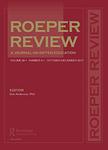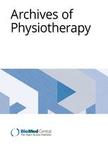版权所有:内蒙古大学图书馆 技术提供:维普资讯• 智图
内蒙古自治区呼和浩特市赛罕区大学西街235号 邮编: 010021
T=题名(书名、题名),A=作者(责任者),K=主题词,P=出版物名称,PU=出版社名称,O=机构(作者单位、学位授予单位、专利申请人),L=中图分类号,C=学科分类号,U=全部字段,Y=年(出版发行年、学位年度、标准发布年)
AND代表“并且”;OR代表“或者”;NOT代表“不包含”;(注意必须大写,运算符两边需空一格)
范例一:(K=图书馆学 OR K=情报学) AND A=范并思 AND Y=1982-2016
范例二:P=计算机应用与软件 AND (U=C++ OR U=Basic) NOT K=Visual AND Y=2011-2016





S1 Criteria for exercises selection in subjects with low back pain
Alessandro Aina
S2 Recent advances in pathophysiology and treatment of myofascial trigger points
Marco Barbero
S3 Rehabilitation of scapular dyskinesia
Barbara Cagnie
S4 Musculoskeletal rehabilitation in subjects affected by neurological disorders
Elena Castelli
S5 Which examination tests suggest the best candidates for manual therapy
Chad Cook
S6 Case study: the role of the measurements for the identification of targets and guidance of the treatment
Silvano Ferrari
S7 Assessment of joint mobility: state of the art
Andrea Foglia, Paolo Bizzarri
S8 Core stabilization exercises in the treatment of urinary incontinence
Donatella Giraudo
S9 Preventing surgical subacromial decompression through rotator cuff rehabilitation
Chris Littlewood
S10 Methodological aspects of Clinical Prediction Rules in the rehabilitation of Low Back Pain
Paolo Pillastrini
S11 Interpretability of outcome measures in musculoskeletal rehabilitation
Daniele Piscitelli
S12 Conservative treatment of the misalignment of the spine: state of the art and perspectives
Michele Romano
S13 Balance training in subjects with musculoskeletal disorders
Andrea Tettamanti
S14 Dosage of manual therapy: principles for clinical practice
Carla Vanti
S15 Are there speed limits in post-surgery lower limb rehabilitation?
Stefano Vercelli
S16 Classification of predominant neuropathic, nociceptive or central sensation pain
Lennard Voogt
P1 A wearable proprioceptive stabilizer (Equistasi®) for rehabilitation of balance disorders in multiple sclerosis patients: preliminary results of a randomized, double-blind, versus placebo controlled study
Aceto Maria, Spina Emanuele, Paone Paolo, Silvestre Francesco, Carotenuto Antonio, Ceri
电话和邮箱必须正确填写,我们会与您联系确认。
版权所有:内蒙古大学图书馆 技术提供:维普资讯• 智图
内蒙古自治区呼和浩特市赛罕区大学西街235号 邮编: 010021

暂无评论